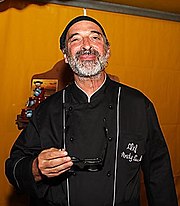Design
Design
Personality
Chart Properties
Your Cross represents the specific theme of your life. This cross embodies your unique potential & the lessons you're here to learn, providing a roadmap to fulfilling your life purpose.
We use the UTC birth time and date to do the calculations required to generate your Human Design chart.
Buy Tokens
Pay as you use, no expiry and no subscription required.Prompt Ideas
Get inspired with some epic prompt ideas.Frits Zernike's Biography
Dutch physicist and winner of the Nobel prize in 1953 for his invention of the phase contrast microscope. This microscope enabled biologists to study the life behaviour of microbe’s without fixating them. Before that, animals had to be killed with fixative colours/dyes to be watched.
His Baptist parents Carl Frederick August Zernike (23 January 1859, Amsterdam – 30 October 1922, Amsterdam) and Antje Dieperink (1859-11 January 1932, Doorn) were teachers. They married 5 Augustus 1886 in Amsterdam and got six children. His parents stimulated the education for all of their children. His sister Anne Zernike (30 April 1887 6 PM , Amsterdam – 6 March 1972, Amersfoort), a Rilke translator, became the first Dutch female teacher of religion and the first female minister of the Netherlands. His sister Elisabeth Zernike (8 July 1891 8 PM, Amsterdam – 12 March 1982, Laren) became a poet and writer. His sister Lize Zernike (1890-1989) was the grandmother of Noble Prize winner Gerard ‘t Hooft (5 July 1946, Den Helder).
As a child Frits shared the interest in physics and optics with his father, who was a mathematician. He made his own photo-camera’s and telescopes from waste materials. As a child he studied the moon, without knowing that years later a crater on the far side of the Moon would be named after him.
He studied chemistry (major), mathematics and physics at the University of Amsterdam (1905-1912). In 1908 and 1912 he won prizes. In 1912 explained the opalescence dichroic behaviour of dispersed gases, that make the blue sky in the daytime and the yellowish-red sky at sunset. His thesis “L’opalescence critique, théorie et experiments” dealt with the same subject (17 February 1915, Amsterdam)
Early 1913 he became an assistant of the astronomer J.C. Kapteyn in Groningen. Her he met L.S. Ornstein. June 1915 he became lector and on 1 April 1920 professor in theoretical physics till 1958. From 1938-1939 he was rector magnificus of the University of Groningen. After the war he also taught in the USA (1922, 1947-1948 at the Johns Hopkins University, Baltimore, 1951, 1954).
He became most famous for the development, with help of the German and USA optic specialists, of the phase contrast microscope. The process took many years, but it ended with a microscope that could view living microbes and cells without staining them. He got many honours for it from the international scientific community.
Personal
Zernike married late. He was a modest man who spent all his time to science or at home. Between 1920 and 1930 he lived his sister Elisabeth and later with his mother. On 28 January 1930 he married Theodora Willemin van Bommel van Vloten (19 Augustus 1887, Arnhem – 16 February 1945 13h30, Groningen), a divorced teacher and member of the noted Dutch Van Vloten family. She stimulated him to be less home-bound. He got with her a son and adopted her daughter (she became a Zernike on 12 June 1944). After her death, he married on 12 February 1954 Lena Baanders (27 Feb 1887, Amsterdam – 9 January 1975, Naarden), the widow of the atheistic Dutch-Jewish classicist Samuel “Sam” Koperberg (15-3-1879).
Zernike was born as a Baptist Christian, but later became a member of the atheistic/agnostic Humanistisch Verbond. In 1958 he became ill and unable to travel. On 10 March 1966, he died of disease in the hospital of Amersfoort.
Link to Wikipedia
Frits Zernike
Your Cross represents the specific theme of your life. This cross embodies your unique potential & the lessons you're here to learn, providing a roadmap to fulfilling your life purpose.
We use the UTC birth time and date to do the calculations required to generate your Human Design chart.
Prompt Ideas
Get inspired with some epic prompt ideas.William F. McDonnell
3/5 Emotional - Solar Plexus Manifesting GeneratorAlex Romero
3/5 Emotional - Solar Plexus Manifesting Generator

Mike Birbiglia
1/3 Sacral GeneratorSid Ali Ghoumrassi
5/1 Self Projected Projector





